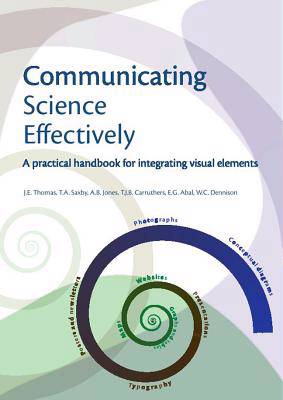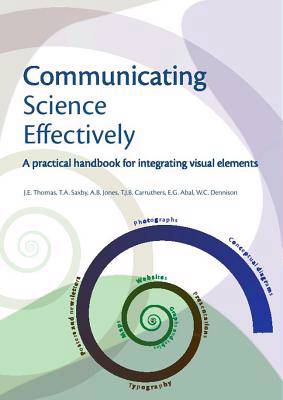
Door een staking bij bpost kan je online bestelling op dit moment iets langer onderweg zijn dan voorzien. Dringend iets nodig? Onze winkels ontvangen jou met open armen!
- Afhalen na 1 uur in een winkel met voorraad
- Gratis thuislevering in België vanaf € 30
- Ruim aanbod met 7 miljoen producten
Door een staking bij bpost kan je online bestelling op dit moment iets langer onderweg zijn dan voorzien. Dringend iets nodig? Onze winkels ontvangen jou met open armen!
- Afhalen na 1 uur in een winkel met voorraad
- Gratis thuislevering in België vanaf € 30
- Ruim aanbod met 7 miljoen producten
Zoeken
Communicating Science Effectively
J Thomas, A Jones, T Saxby, T Carruthers, E Abal, W Dennison
Paperback | Engels
€ 58,95
+ 117 punten
Omschrijving
This is a practical handbook on how to communicate science effectively. The first part is an introduction to the principles of science communication and what effective science communication is, why it is important, and how to do it. The principles in these chapters include how effective science communication can change societal paradigms and make one a better scientist. General principles relating to all science communication products include providing synthesis, visualisation, and context, assembling self-contained visual elements such as photos, maps, conceptual diagrams and data, formatting content to define and simplify terms, and eliminating jargon and acronyms. Formatting of these visual elements is also discussed. This introduction is followed by chapters outlining techniques and principles for communicating in different media & desktop publishing (including posters and newsletters), presentations and websites. Techniques in these chapters include image, colour, and font formats, resolution and design tips for different media. Finally, a case study is presented to illustrate how effective science communication has become an integral part of a successful environmental science, monitoring, planning, and implementation program. The book is accompanied by extensive internet resources, including interactive software tutorials for the different software programs commonly used in communication, discussion forums for science communication issues, and links to other websites of interest. This book will be a valuable resource for scientists, working in government, research, management agencies, and education. Although environmental scientists are the primary audience, the principles and techniques discussed are applicable to scientists from all fields.
Specificaties
Betrokkenen
- Auteur(s):
- Uitgeverij:
Inhoud
- Aantal bladzijden:
- 140
- Taal:
- Engels
Eigenschappen
- Productcode (EAN):
- 9781843391258
- Verschijningsdatum:
- 30/09/2006
- Uitvoering:
- Paperback
- Formaat:
- Trade paperback (VS)
- Afmetingen:
- 156 mm x 234 mm
- Gewicht:
- 498 g

Alleen bij Standaard Boekhandel
+ 117 punten op je klantenkaart van Standaard Boekhandel
Beoordelingen
We publiceren alleen reviews die voldoen aan de voorwaarden voor reviews. Bekijk onze voorwaarden voor reviews.











